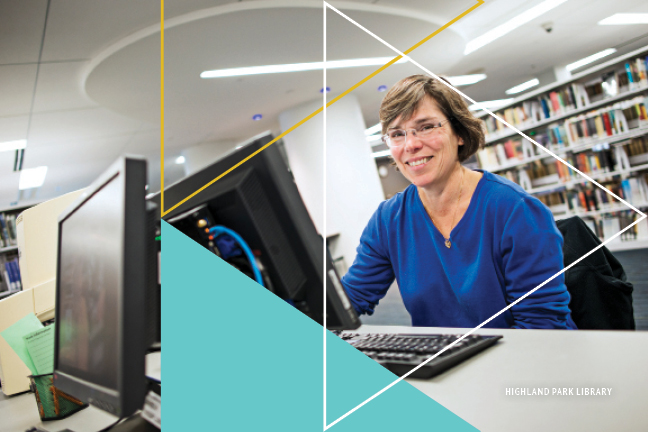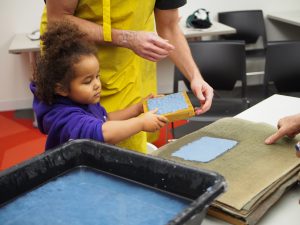
Our community engagement sessions were dynamic, energizing, uplifting, and eye-opening. We heard from thousands of people across Saint Paul from all ages, races, backgrounds, and life experiences. Several common themes emerged from this process.
People want libraries to focus on young people and families.
Emphasis was placed on providing young people and families with access to information, creative programming, and supportive, trauma-sensitive spaces during important life transitions. Young people, especially teens, were frequently cited as one of the most important and challenging groups for the Library to serve. One user shared that the Library can help with “bridging our family to the greater community and cultural events and engaging kids in lifelong learning.”
People want libraries to hold space for both quiet and loud activities.
Participants recognized and illustrated the tension between the need for quiet and loud spaces in libraries. They acknowledged that the perception of libraries as formal, quiet, and solitary spaces with rigid rules can be alienating to potential users, especially young people. However, they also recognized that the Library might be the only quiet space available for some people to do their best learning. Many users wished for music, noise, and designated spaces for intentional gathering and connection. Ultimately, they want the Library to design and share intentional spaces for both quiet learning and loud community building.
People face structural, cultural, and financial barriers to using libraries.
Users across race, ethnicity, age, gender, education level, and neighborhood affinity consistently cited fines and the fear of fines and lost books as reasons not to go to the library.
This was followed by language barriers, library card issues, and limited Library hours. Other barriers included lack of transportation and getting books from other places that felt easier (online) or more welcoming (the school library). Cultural barriers included not knowing what is available at the Library, a sense of feeling unwelcome by staff members, being part of a community that doesn’t go to the Library, and fear of other patrons.
Patrons who were identified as “people we want to serve better” need the Library to better reflect the community by “including all cultures,” and prioritizing the inclusion of all patrons. Users want to see Library resources stay fresh, and deepen and improve the quantity, quality, and relevancy of resources that reflect and affirm Saint Paul’s diverse population. Users asked for more books in Spanish and Vietnamese texts and shared disappointment that “the Library is missing LGBTQ+ materials.”
People seek an environment that fosters safety and belonging.
Participants wished for library branches to feel comfortable, welcoming, and clean. They asked for more inviting seating areas and improved children’s spaces. They frequently requested that the Library serve as a community building space where all people could feel welcome to meet and interact, while viewing exhibits or creating art. Some users said that library buildings should find ways to mirror the natural environment with plants and other natural elements that could create healing spaces for library users.
Many users, especially young people, suggested they would like a deeper relationship with the Library where they would feel seen and be invited to contribute their talents and skills to the Library by way of jobs or mentorship opportunities.
People seek programming beyond books and buildings.
While access to books remains a reason users visit the Library, people suggested a variety of resources that would make them more frequent users, including diverse materials (textbooks, sheet music, audiobooks, movies, tools, and hardware), more mobile library options (libraries in neighborhoods, online, and in other places), access to cutting-edge technology (3D printers, headphones, computers, tables, music production equipment, podcast equipment), items for young children (toys, books, games, art supplies), and access to experiences (cultural materials and exhibits). Users want the Library to come to them if they can’t get to the Library.


Add a comment to: Community Insights